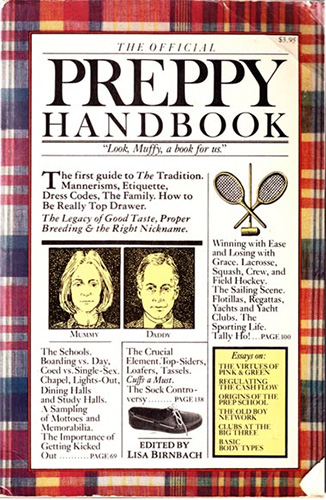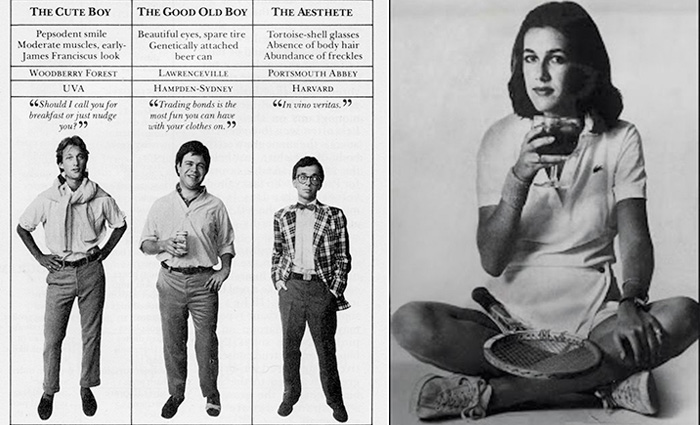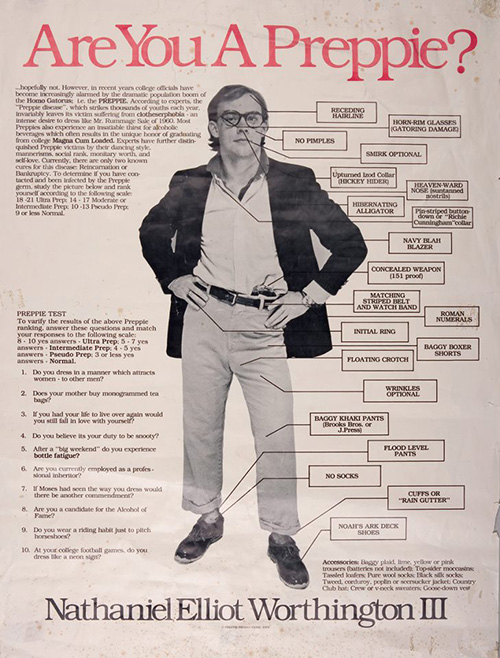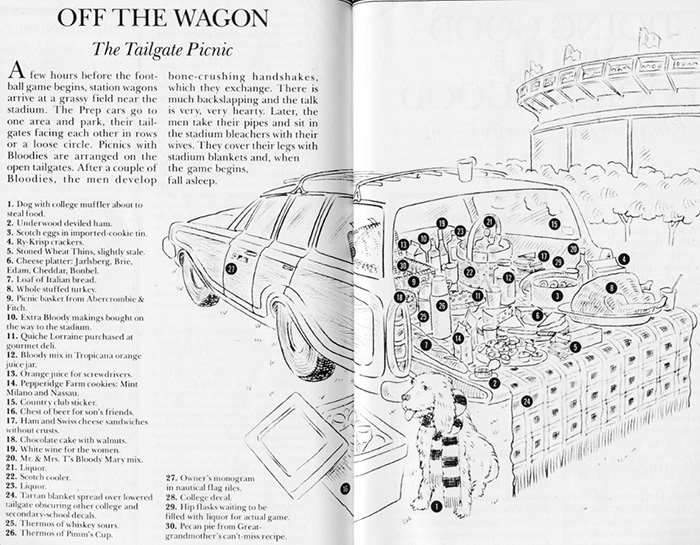

When The Official Preppy Handbook hit bookstore shelves in October 1980, no one could have predicted the effect it would have. A tongue-in-cheek field guide to the madras-clad masses of the day, it decoded the habits of the upper crust with just the right mix of knowingness and satire, and reached an audience far broader than its subjects. It struck a particularly strong chord in the South, where preppy style flourished (and still does). A year later, the book was still on the New York Times bestseller list. Eventually, it would be reprinted a whopping 32 times before publication ceased in 1995.
No one was more surprised at the book’s impact than its creator, editor, and co-author, Lisa Birnbach. A graduate of Brown University, Birnbach was well versed in prep schools and WASP culture long before she decided to throw back the curtain on the world she’d grown up in. When the idea struck, she was fresh out of college, a twenty-one-year-old reporter working for the Village Voice.
As part of the original book tour, Birnbach spent years crisscrossing the South, signing autographs on Lacoste shirts, watching fraternity members gator for her approval, and learning the fine points of different Southern barbecue traditions. In honor of The Official Preppy Handbook’s 35th anniversary, we asked her to share some of her favorite memories from her time below the Mason-Dixon.

From left: A guide to preppy gents; Lisa Birnbach in the early 1980s.
I hadn’t really been to the South before 1980. There were things that just floored me—the beauty, the manners, the hospitality. Oh, and the concept of the Southern gentleman—that was very, very attractive. In those pre-Starbucks, pre-everything-looking-the-same days, there was so much local culture and particularity, especially in the South. Richmond, Charleston, Dallas, New Orleans—they all have their own interpretation of the South, which is something I didn’t really realize until I spent time there.
Pimento cheese. Barbecue, and discovering that Memphis barbecue was a whole different thing from Texas barbecue. Go cups and Goo Goo Clusters. Southern food was a huge thing for me. You could always tell where you were based on the food and the accents.
I experienced my first salad bar in North Carolina—either at the University of North Carolina in Chapel Hill or at Duke. I had never seen or heard of one before. People think that everything starts in New York. Not true.

An anatomical breakdown of prep style.
Richmond was an important early stop and a frequent stop. It was a very preppy place. I remember there was a big radio station on top of a hill, and I was invited to be on a show to talk about the book. There was also a department store called Thalhimer’s, and Becky was the book buyer. Don’t ask me how I remember her name, but I do. I had a book signing there, one of my first, but there were no books—all 7,500 copies of the first run had sold out within a week of the book’s release—so Becky had me sign book plates for people to put into their books later. I remember sitting at a desk in the middle of a busy intersection in the store aisles, and there being a long line. There was a Shasta delivery man in uniform, and I couldn’t understand why this satire of preppy humor would appeal to him, or to anyone in the South except maybe Episcopal or University of Virginia grads. The next time I came back through town, the same guy was there, only this time he was wearing a webbed canvas belt on top of his uniform. He showed it to me with pride.

The secrets to a perfectly tricked out tailgate spread.
In Charlottesville, I met the mayor and got a key to the city. At that moment, I knew I wasn’t just a person from New York bringing this book and its insights to the South. I felt like a Southerner trapped in a Yankee’s body, because everyone there already knew what I was writing about. One of the book’s contributors, Mason Wiley, was from Rocky Mount, North Carolina, so he made sure we included plenty of Southern things to offset all the Boston and New England bits. Maybe that’s why the reaction was so strong.
In Greenville, South Carolina, I clocked a lot of time in the Junior League ‘Nearly New’ shop. I bought a Lilly Pulitzer halter necked dress with a darling yellow and orange monkey print for $5. That’s about the best bargain I’ve ever bought. And somewhere along the way, I learned to put on makeup properly in a sorority house.

Birnbach styled all of the models—mostly friends and professional associates—herself.
I was on tour basically for two years. At one point, I was gone for so long my phone or electricity—one of them—was cut off. By 1982, I was a regular at Greek Week events and had begun lecturing at places like Duke, Ole Miss, Texas Christian, the University of Alabama, and Emory. I think my presentation was called “How to Be a Preppy.” It was a comedy show, more or less. Fraternity guys were gatoring for my approval. I autographed Lacoste shirts. Girls were teaching me about add-a-bead and add-a-pearl necklaces. That was the first concept everyone in the South thought I’d surely know about, but I had no idea. Those necklaces were a revelation. Really, though, I was just putting my adult life on hold. It was a great, great time.